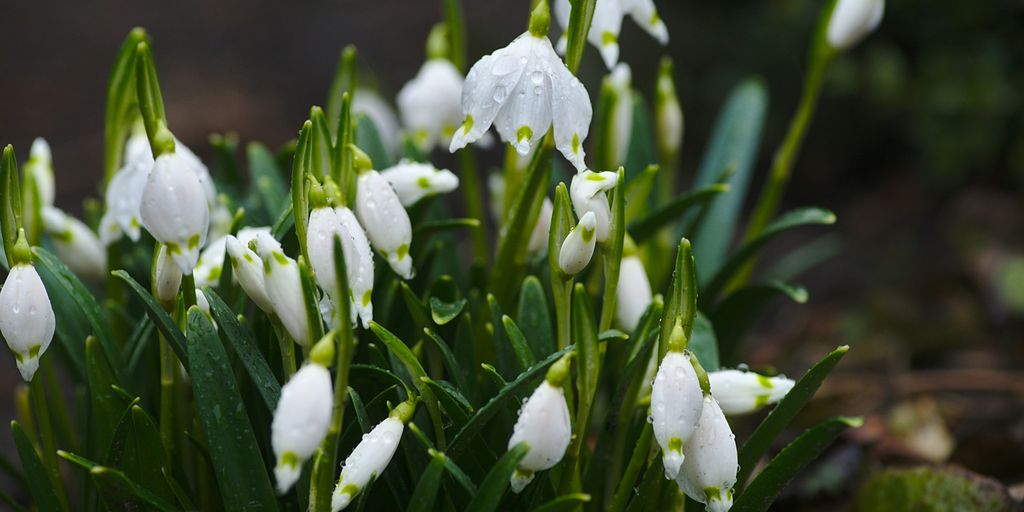Gardening enthusiasts often find themselves at a crossroads when it comes to selecting the right plants for their outdoor spaces. The choice between annual vs. perennial plants can be a pivotal decision, shaping the long-term aesthetics and maintenance requirements of your garden.
This article delves into the unique characteristics, benefits, and considerations for both perennial and annual flowers, providing insights to help you make an informed choice for your garden.
Key Takeaways
- Perennial plants regrow every spring, offering enduring beauty for years but generally have a shorter blooming period compared to annuals.
- Annual plants complete their life cycle in a single growing season, providing vibrant, season-long color but need to be replanted each year.
- Combining both annuals and perennials in your garden design can give you the best of both worlds, with varied color, texture, and bloom times.
- Climate and local conditions play a significant role in determining the success of annuals and perennials, making it essential to choose the right plants for your region.
- Economic factors, including initial costs and long-term investments, should be considered when planning your garden, with perennials generally offering more value over time.
Understanding Perennial Flowers

Characteristics of Perennials
A perennial is a plant that lives more than two years and regrows each spring. While the blooms and leaves of perennials die back during winter, new growth arises the following spring with minimal work on your part. Perennials have a longer lifespan than annuals and may bloom for several weeks or months each year. These plants are typically planted during fall or early spring.
Popular Perennial Varieties
Common perennials include:
- Peonies
- Asters
- Roses
- Mums
- Coneflowers
- Hostas
- Daylilies
Benefits of Growing Perennials
- Cost-effective: Unlike annuals, you purchase them once and then they spread, self-seed, or can be divided for more plants.
- Low maintenance: When sited correctly, perennials can be divided and moved around the garden to create a lush and immersive landscape that will return year after year.
- Environmental support: Native varieties support the environment by hosting pollinators and insects, and providing seeds for wildlife.
Perennials are typically cold-hardy plants that will return again in the spring. They usually bloom for only one season each year (either spring, summer, or fall), but there are also reblooming and long-blooming perennials.
Exploring Annual Flowers

Characteristics of Annuals
Annuals are like the trendy clothes in your wardrobe—they add a little fun and excitement alongside your tried-and-true perennials. Growing annuals can be a great way to take gardening one year at a time; experiment with new plants and color schemes without making a long-term commitment. Annuals leave you room to plant something new and shake things up in your garden each year—without feeling like you’re throwing away money by digging up healthy perennials.
Popular Annual Varieties
Popular annual flowers include petunias, marigolds, zinnias, and impatiens. If you’re looking for something a little more exotic than these traditional bedding plants, try spider flower (cleome), gazania, vinca, and lisianthus. Some annuals are grown for their attractive foliage rather than flowers. Try coleus, Joseph’s coat (Alternanthera), or dusty miller.
Benefits of Growing Annuals
- Annuals are perfect for temporarily filling in bare spots in established gardens or refreshing containers through the season.
- Add annuals to a vegetable garden for a splash of color, to fill in gaps when early-season crops are harvested, and attract pollinators to increase production of edible crops.
Annuals are a fun way to try a new color for a while to see if you really want it in your palette.
Growing annuals can be a great way to take gardening one year at a time; experiment with new plants and color schemes without making a long-term commitment.
Comparative Growth Cycles

Life Cycle of Perennials
Perennial flowers are known for their extended lifespan, often living for three years or longer. Unlike annuals, which complete their life cycle in one growing season, perennials return year after year, providing consistent beauty to your garden. They typically go through a cycle of growth, bloom, and dormancy, adapting to seasonal changes.
Life Cycle of Annuals
Annual plants are a type of plant that live for just one season. In that brief period, they germinate, grow, flower, and set seeds for next year’s plants—completing their entire life cycle within a single growing season. This rapid cycle allows gardeners to experiment with different varieties each year.
Seasonal Growth Patterns
- Perennials: These plants have a predictable pattern of growth and dormancy, making them reliable for long-term garden planning.
- Annuals: Their short life cycle means they provide vibrant color and variety but need to be replanted each year.
Understanding the differences in growth cycles between annuals and perennials can help you make informed decisions for your garden’s layout and maintenance.
Designing a Mixed Garden
Creating a garden that combines both annuals and perennials can be a rewarding experience. Annuals and perennials can be combined in your planting design to reap the best of both. Annuals are hard to beat in terms of showy, season-long color, while perennials will give you the most value for your money. Since the perennial flowering season is usually shorter, make sure to plant different varieties to keep color going through the season. Whichever you choose, you’ll have vivid color in your future.
Climate Considerations
Perennials in Different Climates
Perennials are generally hardier than annuals, especially native species. They are more cold-hardy and drought-tolerant, making them suitable for a variety of challenging environments such as smoggy cities, hurricane-prone coastlines, rocky mountain regions, and hot desert terrain. You won’t have to worry about all your perennials dying if you go on a weeklong summer vacation.
Annuals in Different Climates
Annuals are typically intolerant of freezing temperatures. However, they thrive early and late in the season when temperatures are too cool for most tender plants. They are a great addition to containers or a garden full of perennials, adding nearly instant color when perennials have stopped blooming for the season.
Adapting to Local Conditions
When planning your garden, it’s crucial to consider the local climate. Here are some tips:
- Choose plants that are well-suited to your region’s weather patterns.
- For hot climates, select drought-tolerant species.
- In colder areas, opt for cold-hardy varieties.
Combining annuals and perennials can create a garden that thrives throughout the year, offering both resilience and seasonal interest.
Economic Factors
Cost of Annuals vs. Perennials
When planning a garden, understanding the comparative profitability of annual flowers and perennials is crucial. Annuals often have a lower initial cost but need to be replanted every year, which can add up over time. Perennials, on the other hand, may have a higher upfront cost but can be more economical in the long run as they return year after year.
Long-Term Investment
Investing in perennials can be seen as a long-term strategy. While the initial expense might be higher, the recurring costs are lower since these plants do not need to be replaced annually. This makes perennials a cost-effective choice for gardeners looking to save money over several seasons.
Budget-Friendly Gardening Tips
- Plan your garden layout to maximize space and reduce waste.
- Start with seeds rather than mature plants to cut costs.
- Utilize compost and organic fertilizers to improve soil health and reduce the need for expensive chemical products.
- Group plants with similar water needs to save on irrigation costs.
- Take advantage of sales and discounts at local nurseries and garden centers.
By carefully considering the economic factors, gardeners can make informed decisions that balance initial costs with long-term benefits.
Common Misconceptions

Misunderstood Growth Habits
One common misconception is that perennials require less maintenance than annuals. While perennials do come back year after year, they still need regular care, including pruning, fertilizing, and sometimes even dividing to keep them healthy and vibrant.
Debunking Myths
Many people believe that annual plants are less hardy than perennials. However, this is not always the case. Annuals can be quite resilient and often thrive in conditions where perennials might struggle. The main difference between annual and biennial plants is the length of their life cycle. Annual plants sprout from seed, flower, and die in one year.
Expert Opinions
Experts often emphasize the importance of understanding the specific needs of each plant type. Both annuals and perennials have their own unique requirements and benefits. It’s crucial to consider these factors when planning your garden to ensure a harmonious and thriving environment.
Misconceptions about plant care can lead to poor garden planning and maintenance. Always research and understand the needs of your plants to avoid common pitfalls.
Conclusion
In conclusion, the choice between perennial and annual flowers ultimately depends on your gardening goals, preferences, and the specific conditions of your garden. Perennial plants offer long-term beauty and can be a cost-effective option as they return year after year. However, they often have shorter blooming periods and may take time to establish. On the other hand, annual plants provide vibrant, season-long color and can quickly transform your garden, but they need to be replanted every year. By integrating both types into your garden, you can enjoy the best of both worlds—enduring beauty from perennials and the dynamic, ever-changing display of annuals. This balanced approach allows for a diverse and visually appealing garden that can adapt to your evolving tastes and needs.
Zaki Infitar is the driving force and creative mind behind GreenBuilt.co. As a self-taught gardener with an unwavering passion for all things green, Zaki’s journey into the world of gardening is a testament to his dedication and love for nature.

